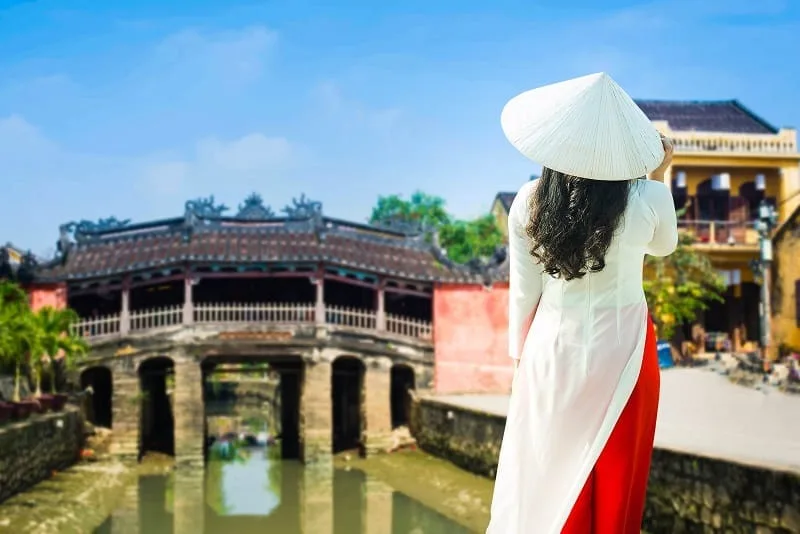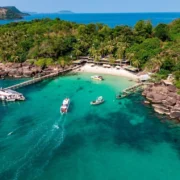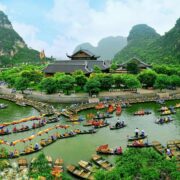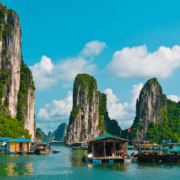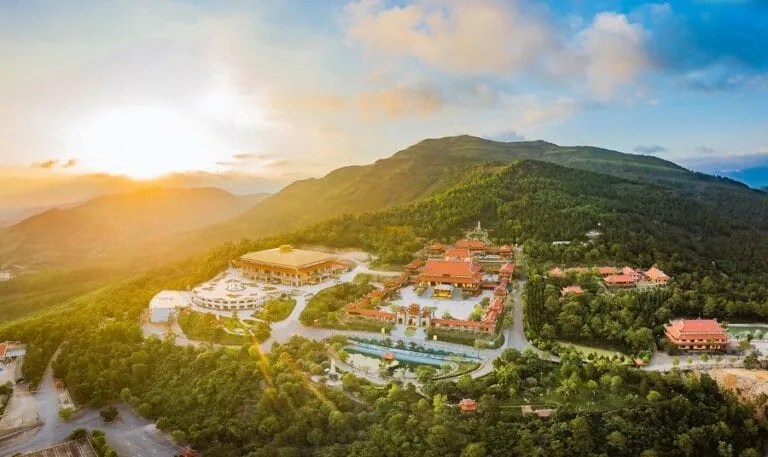
Ba Vang Pagoda: Within the greatest Northern Vietnamese Buddhist center
One of the most well-known pagodas in Vietnam is Ba Vang Pagoda in Quang Ninh Province, which is situated in the tranquil countryside of Northern Vietnam. This beloved Buddhist sanctuary offers a peaceful haven for individuals looking for inner serenity and a closer bond with Vietnamese culture. It is a symbol of both architectural grandeur and spiritual devotion.
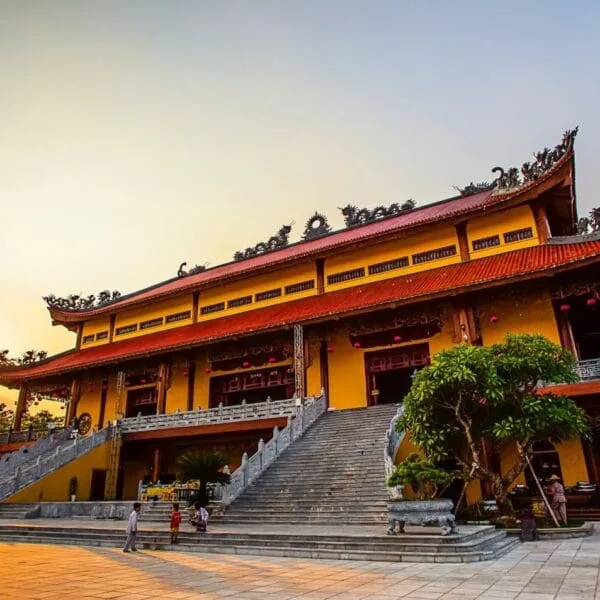
Ba Vang Pagoda
Location and history of Ba Vang Pagoda
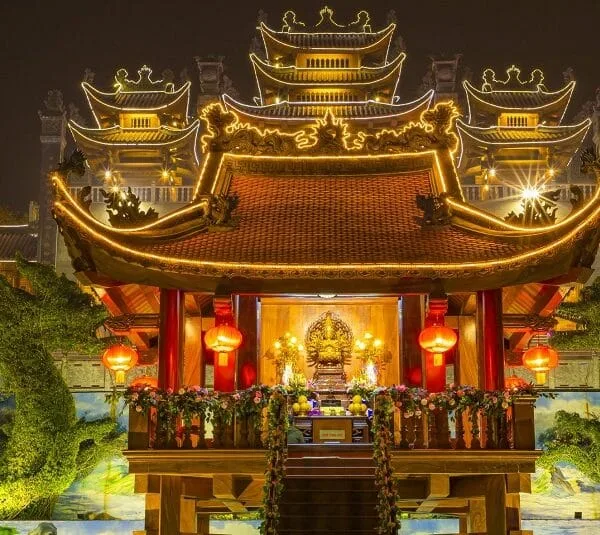
Ba Vang Pagoda
Ba Vang Pagoda, also called Bao Quang Pagoda, is located in Quang Trung Ward, Uong Bi City, Quang Ninh Province, Vietnam. It is tucked away in Thanh Dang Mountain, rising 340 meters above sea level. It enjoys a stunning location near the Bach Dang River’s banks and offers a wide-ranging vista that extends to the busy port city of Hai Phong.
Based on archeological discoveries, the first building of the pagoda could have taken place in the thirteenth century, under the Tran Dynasty. On the other hand, little is known about the pagoda’s past or its creator.
During eight centuries, spanning from the 13th to the 21st century, Ba Vang Pagoda has had four major modifications. After a 300-year break, the Truc Lam Yen Tu Zen sect was revived in 1706 under the leadership of Zen Master Mahasamon Tue Bich Pho Giac. It was remodeled with wood in 1998. It was renovated with cement in 1993, increasing its overall size to 94.97 square meters.
At the Ba Vang Pagoda in Vietnam, Venerable Thich Truc Thai Minh became the abbot in 2007. In January 2011, the pagoda received a major refurbishment due to the necessity for better amenities. At last, in 2014, the pagoda held a grand opening and became the first in Indochina to have the biggest main hall atop a mountain.
Architecture of Ba Vang Pagoda
Encompassing around 22 hectares, the pagoda is situated against the mountain, faces the Bang Dang River, and is encircled by pine forests. Its components include a front shrine, sanctum, back shrine, and several auxiliary things. The sanctuary known as Dai Hung Bao Dien and the inside three-door gate are its highlights.
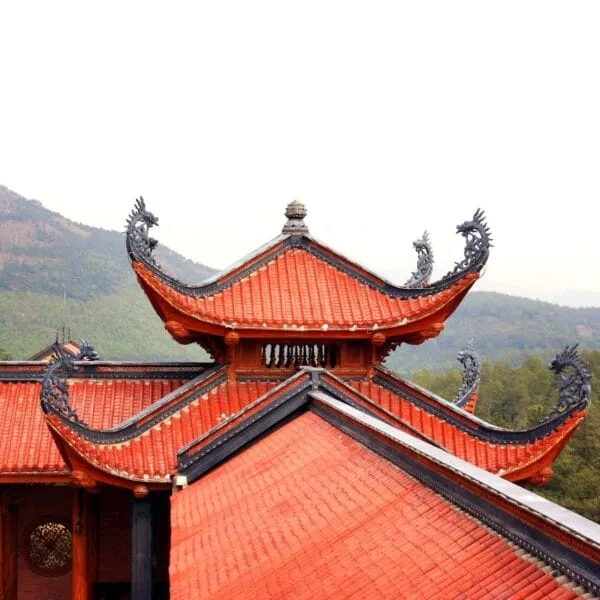
Architecture of Ba Vang Pagoda
The biggest center door is part of the interior three-door gate, which is designed in the Northern pagoda style. Three steeples affixed to sculptures of a dragon, unicorn, turtle, and phoenix are situated above the trio of doors. The inside three-door gate overlooks the semicircular lake and has a pagoda modeled after the One Pillar Pagoda in Ha Noi. The front of the gate is carved with parallel words written in Han characters.
Visitors enter Dai Hung Bao Dien through an interior three-door gate. Its 4,000 square meter space was named “the largest sanctum on the mountain in Indochina” by the Indochina Records Organization in 2014. Numerous beautiful designs are carved into the wall of Dai Hung Bao Dien, particularly the expansive mural artwork that depicts the story of Shakyamuni Buddha from birth to Nirvana.
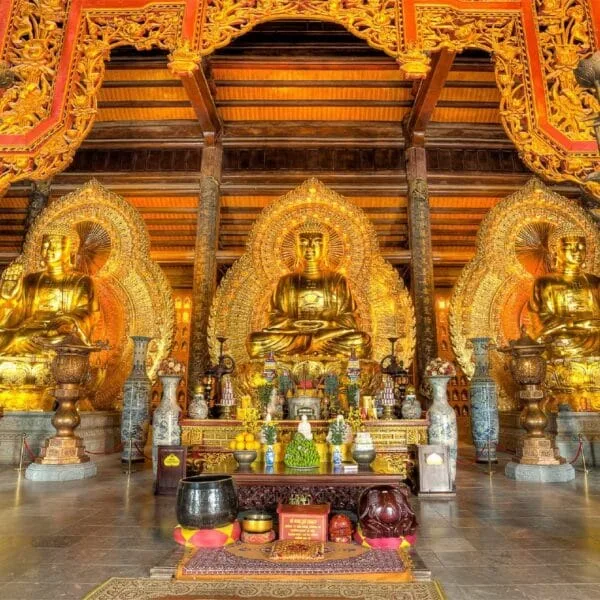
Ba Vang Pagoda
The additional structures that encircle Dai Hung Bao Dien are the arhat statue corridor, preaching hall, library, bell tower, drum tower, and ancestors’ house, all of which are harmoniously aligned to form an architectural ensemble.
When the pagoda’s roof-mounted LED lighting system is turned on at night, the structure assumes a magnificent and spectacular splendor.
When is the best time to visit Ba Vang Pagoda?
The Spring Festival, which falls on the eighth day of the first lunar month, and the Chrysanthemum Festival, which falls on the ninth day of the ninth lunar month, are the ideal times to visit the pagoda. The pagoda also hosts monthly meditation retreats, which provide a lovely opportunity to start over in the pursuit of developing inner peace and to enjoy the serenity and quiet of this lovely location.
Top attractions at Ba Vang Pagoda Vietnam
Stone Gate
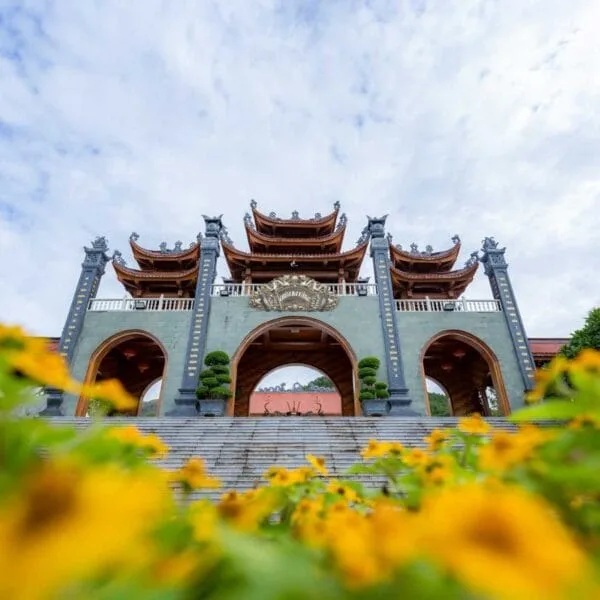
Stone Gate
When guests arrive at the pagoda, one of the main architectural features that welcomes them is the Stone Gate. Ten sculptures depicting the Buddha’s Ten Great Disciples, each holding an alms bowl – a modest but deeply meaningful symbol in Buddhist monks’ everyday lives – adorn this entrance.
Tam Quan Trung & Tu Bi Waterfall
The entryway to the majestic pagoda is called Tam Quan Trung. Visitors will sense the calm atmosphere of Buddha’s domain as soon as they pass through the gate, which stands in sharp contrast to the bustling of the city. A waterfall awaits a nice surprise within. Its soft streams create calming sounds as they cascade through rocky nooks. A deep sense of calm is evoked in the souls of everyone who visit thanks to the harmonic blending of trees, clouds, water, and flowers.
The Godly Well
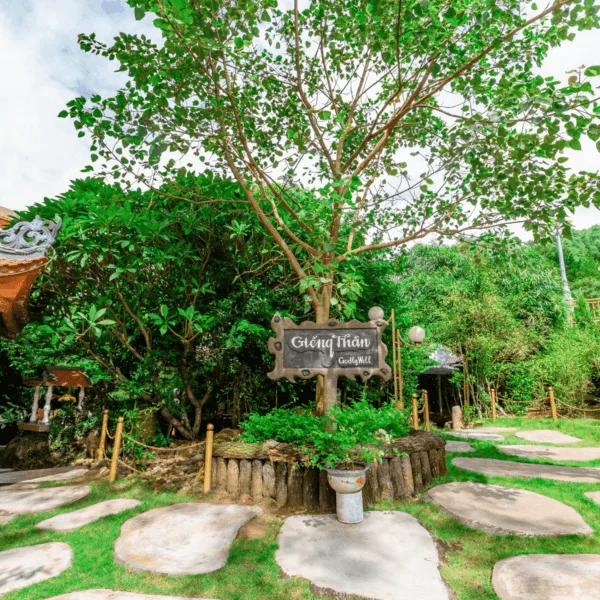
The Godly Well
There is a 300-year-old clean water well on the pagoda complex, with water levels typically about two meters. We refer to this as the Godly Well. The story goes that anyone who drinks water from the well on New Year’s Eve will be healthy and may even be able to treat a variety of ailments. As a result, a large number of visitors and Buddhists from all over the world frequently request to sample the well’s drinking water.
Statues of Buddha
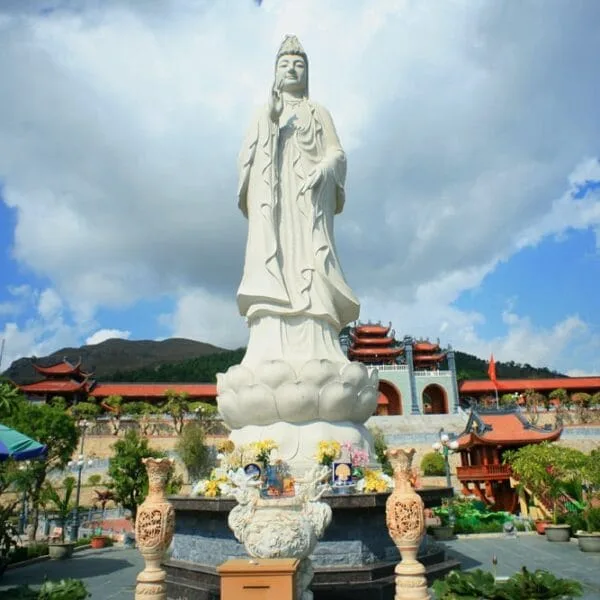
Statues of Buddha
The Ba Vang Pagoda is home to several statues, including:
- Amitabha Buddha statue: Made entirely of natural wood, this is the biggest wooden Buddha statue in Northern Vietnam.
- An Avalokiteshvara Bodhisattva statue: A statue with intricate carvings that stands 10 meters tall and weighs 50 tons.
- One Pillar Pagoda Statues of 18 Arhats, with a statue of the thousand-armed and thousand-eyed Avalokiteshvara within.
Bo De Garden
Bo De Garden at Ba Vang Pagoda is a well-liked location for photos. This lovely garden has a nice rustic wooden bridge and is surrounded by lush foliage with brilliant flowers all around it. These components work together to create a striking natural scene that offers guests a peaceful haven where worries of everyday life appear to vanish.
One Pillar Pagoda and Ban Nguyet Lake
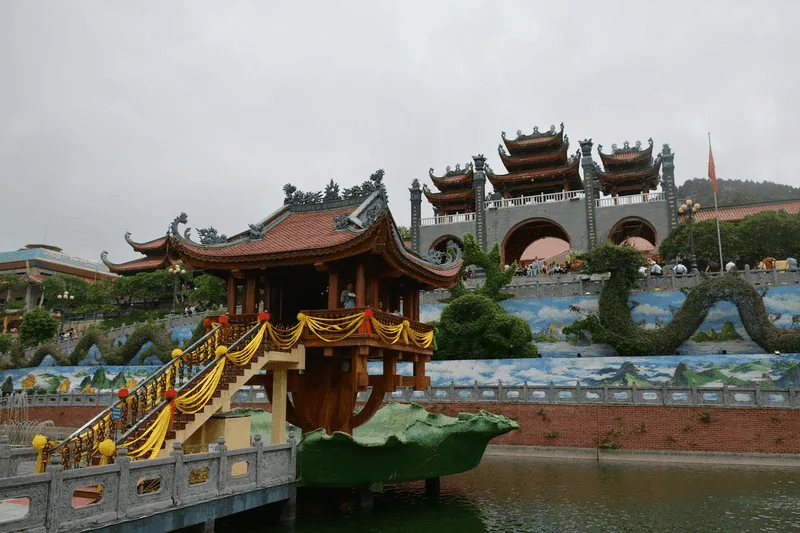
One Pillar Pagoda and Ban Nguyet Lake
One Pillar Pagoda is a beautiful structure that is nestled within Ba Vang Pagoda. It rises gently from the serene lap of a lake. This little pagoda is quite similar to Hanoi’s well-known One Pillar Pagoda. As a hallowed location for pagoda worship, it also has great spiritual value.
Tam Quan Noi
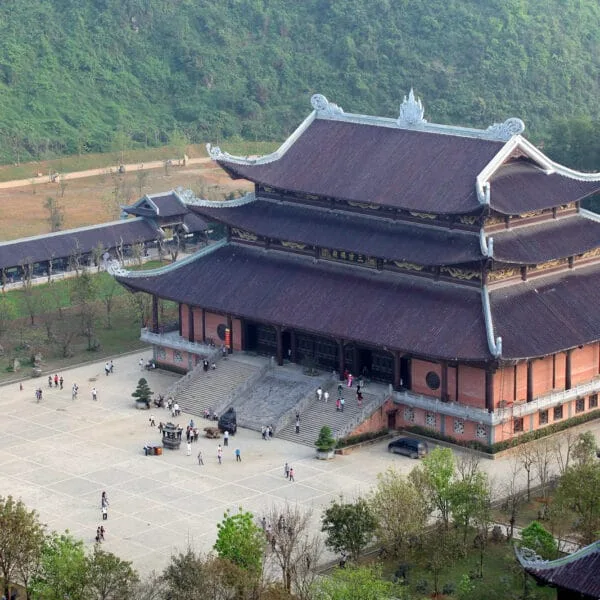
Tam Quan Noi
Visitors will surely be in awe of Tam Quan Noi’s beauty. This gate, which is more than 23 meters long and rises to a remarkable 15 meters in height, is a work of architectural art that has 29 stone steps on it. The two sides of the gate are adorned with elaborate couplets, adding even more embellishment. A Buddhist and a Vietnamese flag fly side by side in front of Tam Quan Noi, waving in the breeze with pride.
Main hall
The solemn main hall of the Ba Vang Pagoda serves as its architectural focal point. Incense offerings, prostrations, and sutra recitations can be done here by guests. This two-story wonder is 28.42 meters tall and covers 4,767 square meters. Reached by 33 stone steps on the base of the ancient pagoda, it symbolizes a link to both heavenly and terrestrial energy. The design of the hall skillfully combines contemporary spaciousness with traditional Vietnamese monastery features. To meet the demands of both believers and visitors, this expansive layout offers the perfect setting for Buddhist study, practice, and devotion.
Special festivals
Throughout the year, Ba Vang Pagoda organizes several pleasant festivities that provide possibilities for lively involvement:
- The eighth day of the first lunar month is the Spring Festival.
- On the eighth day of the fourth lunar month, people celebrate the birthday of the Buddha.
- On the 19th day of the 6th lunar month, there is a unique ritual devoted to cultivating the bodhi mind and requesting blessings for unborn baby spirits.
Read more: Vietnam itinerary: Discover the beauty of Vietnam
Recent Posts
12+ best tourist attractions in Vietnam
The best North Vietnam itinerary 7 days
7 days in Vietnam itinerary: An unforgettable adventure awaits
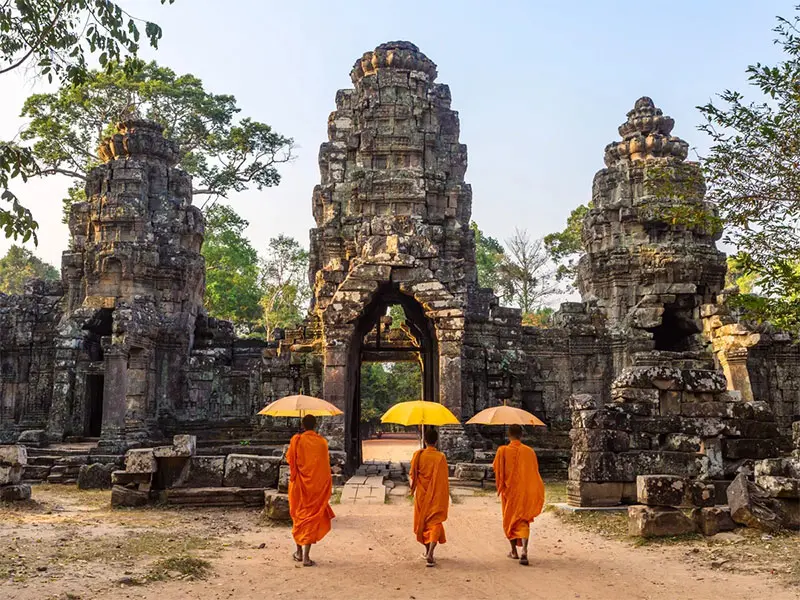
Thailand
